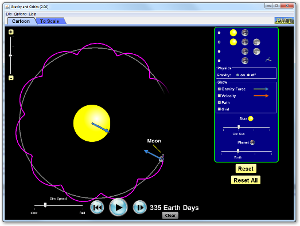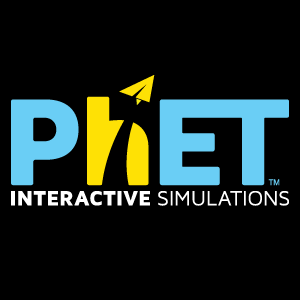My name is Hayden Julius and I am a Secondary Education - Physics major and this is my final project for SEDU183 Technology for Teachers and Learning. This project will be a glimpse into my vision of my future classroom. Provided will be explanations of how I will incorporate technology and different resources into the classroom. I will also discuss my personal views on education, as they are very reflective on my vision. Earlier in the year, I created a "This I Believe" Visual Essay and it will kick off My 21st Century Classroom:
As you can see, my views on education are slightly political. I think that America has abandoned education for wild, unreachable goals. Although it is necessary for success to have a vision, the children of today are polluted by pop culture and success stories and give them the idea that education isn't important. It is also reflected by a lack of confidence in the public school system and conflict over a federal Department of Education. As a future teacher, I want to inspire the communities I teach in to value education and realize that schools are not free-market businesses. The success of a school directly affects the community and ultimately, the nation.
My Classroom:
 | |
| A Graphic Representation of my future classroom. |
Although it may appear to be a standard science classroom: lab area and desk area, this traditional setup continues to promote learning. I feel that this setup is also universal, in that whatever classroom I find myself teaching in, it will have the equipment provided and space to conduct a science classroom in a typical manner.
This classroom promotes transparency, accessibility, and learning centered elements.
- My classroom will be transparent in that the learning and collaboration extends beyond the four walls of the room. When I first start teaching, there is no doubt in my mind that I will have as much expertise as a seasoned teacher. Allowing external resources of teaching videos and content will stream into the classroom through the computer-projector setup. This will also give students the access to these resources outside the classroom, as everything shown in class will be provided in an accessible place....
- My classroom will be accessible in that I plan to maintain a classroom webpage with the provided content of each classroom. Whether or not that portal will be a blog or a content management site like Moodle, which is commonly used in Edinboro's Chemistry department, this access point will be central to my classroom. Management sites like Moodle have upload functions, so perhaps I could even assign homework through the Moodle and turn in lab reports.
- My classroom will be learning centered. Through my own ups and downs in educations, I feel that I have become a better self-directed learner in many subjects. I aspire to teach these skills in my classroom. I don't expect my students to remember every equation I will show in class, but hopefully they will walk away with a working knowledge of Physics and be able to identify, in a real world context, what is happening around them. The lab reflects this: hands-on learning, partnered with my teaching style of practicality and identifiable concepts, will allow my students to understand Physics more than memorizing Physics.
Based on speculation, I can conclude that I will conduct my classroom in a manner that explores the personal involvement of students. My classroom will have many traditional rituals and routines that involve my students in the lesson and promote understanding of the material on an intimate level.
- Rituals
- My classroom will promote transparency and accessibility by assignments outside of the classroom. Time will be devoted to answering these questions systematically in the classroom and promote peer review. Although the bulk of the time in the classroom will be devoted to teaching lessons, there will be time given for specific questions.
- I will also attempt to include students in the learning centered classroom by choosing a daily "sidekick" to perform calculations and answer basic questions, to promote confidence in their answers. A student who is not confident of their answers is not confident in the material, and thus my daily "sidekick" will also change for each day, testing the limits of their potential and comradery in the classroom.
- Routines
- Each non-lab class will begin immediately with a thirty minute lesson, depending on the material, it may or may not be shorter. Then, assuming classtime is around 40 minutes, the remaining will be devoted to answering homework questions and in-class questions. It is vital to answer these questions to promote student centered learning.
- During labs, students will be working with hands on materials, and sometimes these methods do not click as well as theoretical, note taking classes. My assistance will be ubiquitous with lab periods and assistance outside the classroom will be available through a Moodle or website.
In this section, I will explain a typical lesson that will take place in my classroom. For all intensive purposes, I will glance over the instructional lesson on Gravitational Forces between large objects.
I will begin the introduction with the explanation of what a gravitational force is, and that we are all affected by every object in the Universe that has mass. I will then introduce Newton's Law of Universal Gravitation, the central equation for the entire lesson.

 |
| Sun - Earth - Moon simulator. |
Any student questions would be addressed as they come, but future lesson plans will follows this format:
Concept --> Equation --> Variables --> Usage --> Media --> (Optional) Groupwork --> Questions
My Technology Integration:
As stated before, I will use such materials as Moodle for lab reports and homework. This gives me the opportunity to manage the content of the classroom in an online portal setting.
Second, I will use such materials for learning aids in the classroom: Open Education Resources, and PhET simulators, to which I have had personal experiences in my own high school environment. These resources will act as supplements to my lectures.
Third, I am heavily considering maintaining a classroom website, whether through BlogSpot or Facebook or the forum functions in Moodle. A classroom website will give the students 24/7 access to the material and other students for effective nodes of communication. I would also be an active member in the page, so they would have a direct connection to me for instructional help.
I will explicitly try to avoid social networking with my students. I do not plan to delete my Facebook page or my Twitter account because they exist as entertainment and networking for my life outside the classroom. But I want the lines of communication to be open and the ability to ask questions as soon as a problem arises for my classroom website.
PLN:
Establishing a personal learning network will be an interesting challenge as a future teacher. PLNs have distinct pros and cons for me, but I feel that within the first five or ten years teaching these networks will be most helpful. They give me an opportunity to collaborate with others and find new, exciting material for the classroom.
Since I will keep my social networking sites, I will have access to the numerous connections that exist on Facebook, Twitter, etc. A simple search of #edchat into the Twitter search will yield conversations and forums for fellow teachers to communicate.
Also, with the Open Education Resources, my teaching resources will include the variety of professional publications. OERs also give me the opportunity to adjust the teaching methods that may encounter a snag along my personal growth.
Physics is such a large area of study, so I do not doubt that I could ever stop learning. PLNs provide a method to continue learning and being able to teach more effectively the same subjects. I can understand the boredom with teaching; teaching the same subjects and the same tests over and over for thirty years can become tiresome and a thankless job. But with the involvement of PLN and streams of constant learning tools, they will add the pizzazz that keeps teaching Physics interesting.
For an Annotated Bibliography, click here.
Feedback:



No comments:
Post a Comment